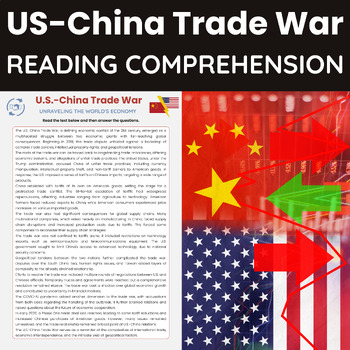Conservative Party And Reform UK: A Divided Front Against Populism?

Table of Contents
Ideological Overlap and Divergence
While sharing certain core tenets, the Conservative Party and Reform UK exhibit significant differences in their approaches and priorities.
Shared Policy Ground
- Focus on Brexit: Both parties champion a firm Brexit stance, although their visions for post-Brexit trade deals and relations with the EU diverge. The Conservatives, while initially advocating for a hard Brexit, have since adopted a more pragmatic approach, prioritizing trade deals and economic stability. Reform UK, however, maintains a more uncompromising position, advocating for a complete severance of ties with the EU.
- Emphasis on fiscal conservatism: Both parties advocate for lower taxes and reduced government spending, aligning with traditional conservative principles. However, their priorities differ. The Conservatives, while committed to fiscal responsibility, often prioritize targeted spending in certain areas like healthcare and infrastructure. Reform UK takes a more austere approach, emphasizing drastic cuts across the board.
- Skepticism towards EU integration: A strong anti-EU sentiment forms a common thread between both parties. However, their approaches to expressing this skepticism differ. The Conservatives largely focus on managing the aftermath of Brexit, while Reform UK continues to aggressively campaign against any form of EU influence or integration.
Key Differences in Approach
- Reform UK's more populist rhetoric: Reform UK utilizes a considerably more populist and confrontational style of communication compared to the Conservatives' more measured and traditional approach. This populist rhetoric often employs strong anti-establishment narratives, targeting both the Conservative Party and the broader political elite.
- Differing views on the role of the state: While both parties generally favor a smaller state, they diverge on the extent of state intervention in key areas. The Conservatives maintain a commitment to public services, albeit with varying degrees of privatization and reform. Reform UK advocates for a significantly reduced role for the state in areas like healthcare and education.
- Leadership and party structure: The stark contrast in leadership styles and party structures contributes to the tension between the two parties. The Conservatives operate within a relatively established and hierarchical party structure, while Reform UK’s more loosely structured organization reflects its populist roots.
- Specific policy disagreements: Significant differences exist on immigration policy, with Reform UK adopting a far stricter stance than the Conservatives. Similarly, differing views on environmental regulations and climate change policy represent a further point of divergence.
Electoral Competition and Strategic Implications
The presence of Reform UK significantly impacts the electoral landscape and the strategic calculations of both parties.
Canvassing the same voter base?
Both parties compete for a similar voter base, particularly amongst those who identify as right-wing, Eurosceptic, and disillusioned with mainstream politics. This overlap creates potential for significant vote-splitting in key constituencies, potentially benefiting the Labour Party or other opposition forces.
Impact on Conservative Party vote share
Reform UK’s existence directly impacts the Conservative Party’s vote share, especially in areas with a strong Eurosceptic base. Reform UK siphons votes away from the Conservatives, weakening their overall electoral performance and potentially costing them seats in crucial elections.
Implications for the broader political landscape
The internal divisions within the right-wing significantly alter the overall political landscape. The competition between the Conservatives and Reform UK fragments the right-wing vote, creating opportunities for other parties to gain traction and influence.
- Electoral results analysis: Examining recent local and national election results clearly demonstrates how Reform UK has impacted Conservative vote share in specific constituencies and regions. Analysis of voting patterns reveals a strong correlation between areas with high Reform UK support and reduced Conservative vote counts.
The Future of the Conservative-Reform UK Relationship
The future relationship between the Conservative Party and Reform UK remains uncertain, contingent on several factors.
Potential for future alliances
While unlikely in the near future given the current tensions, the possibility of future alliances or coalitions between the two parties cannot be entirely dismissed, especially if facing a strong opposition. This would require significant concessions and compromise from both sides.
Impact of future electoral performance
The outcomes of future elections will be instrumental in shaping the relationship between the two parties. A significant decline in Conservative support might lead to increased calls for cooperation, while strong Conservative performances could further marginalize Reform UK.
The role of internal factions
Internal factions within both parties exert considerable influence on the inter-party dynamic. More moderate elements within the Conservatives might favor cooperation, while hardliners in both parties might prefer maintaining a separate course.
- Potential scenarios: Several scenarios are plausible, including continued competition, uneasy alliances based on specific policy issues, or even a complete merger under certain circumstances.
Conclusion
The relationship between the Conservative Party and Reform UK is a complex and dynamic one, characterized by both shared ideological ground and significant divergences in approach and strategy. Their competition for voters and contrasting leadership styles raise substantial questions about their collective effectiveness as a unified right-wing force, particularly against a rising tide of populism from other parties. The potential for vote-splitting and the overall impact on the British political landscape remains a crucial area of study.
Call to Action: Understanding the intricate dynamics between the Conservative Party and Reform UK is paramount for anyone seeking to comprehend the ever-shifting political landscape of the UK. Further research into their policies, electoral strategies, and internal dynamics will provide a deeper insight into the future of the British right-wing and its enduring impact on the nation. Continue following this site for in-depth analysis on the Conservative Party, Reform UK, and the broader UK political spectrum.

Featured Posts
-
 Heavy Snow Expected Tuesday Four Inches Plus Bitter Cold Temperatures To Impact Travel
May 03, 2025
Heavy Snow Expected Tuesday Four Inches Plus Bitter Cold Temperatures To Impact Travel
May 03, 2025 -
 La Seine Musicale 2025 2026 Concerts Danse Cinema Et Jeunes Publics
May 03, 2025
La Seine Musicale 2025 2026 Concerts Danse Cinema Et Jeunes Publics
May 03, 2025 -
 The Untold Story Of Chinas Economic Struggle During The Trade War
May 03, 2025
The Untold Story Of Chinas Economic Struggle During The Trade War
May 03, 2025 -
 Itfaqyat Jdydt Ltezyz Alteawn Altjary Byn Alsewdyt Wadhrbyjan
May 03, 2025
Itfaqyat Jdydt Ltezyz Alteawn Altjary Byn Alsewdyt Wadhrbyjan
May 03, 2025 -
 Le Film Les Tuche 5 A Qui Est Il Dedie
May 03, 2025
Le Film Les Tuche 5 A Qui Est Il Dedie
May 03, 2025
Latest Posts
-
 Emma Stones Popcorn Dress The Talk Of The Snl 50th Anniversary
May 04, 2025
Emma Stones Popcorn Dress The Talk Of The Snl 50th Anniversary
May 04, 2025 -
 I Emma Stooyn Sto Rimeik Tis Tainias Body Heat Pithanes Ekselikseis
May 04, 2025
I Emma Stooyn Sto Rimeik Tis Tainias Body Heat Pithanes Ekselikseis
May 04, 2025 -
 Snl 50th Anniversary Emma Stones Eye Catching Popcorn Dress
May 04, 2025
Snl 50th Anniversary Emma Stones Eye Catching Popcorn Dress
May 04, 2025 -
 Plakothikan I Emma Stooyn Kai I Margkaret Koyalei Sta Oskar I Analysi Tis Lektikis Toys Antiparathesis
May 04, 2025
Plakothikan I Emma Stooyn Kai I Margkaret Koyalei Sta Oskar I Analysi Tis Lektikis Toys Antiparathesis
May 04, 2025 -
 Emma Stones Snl 50th Anniversary Dress Photos And Details
May 04, 2025
Emma Stones Snl 50th Anniversary Dress Photos And Details
May 04, 2025
